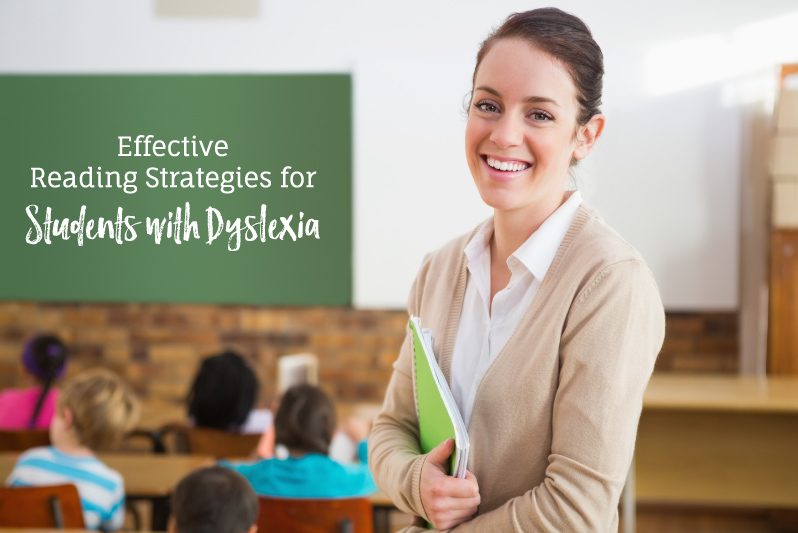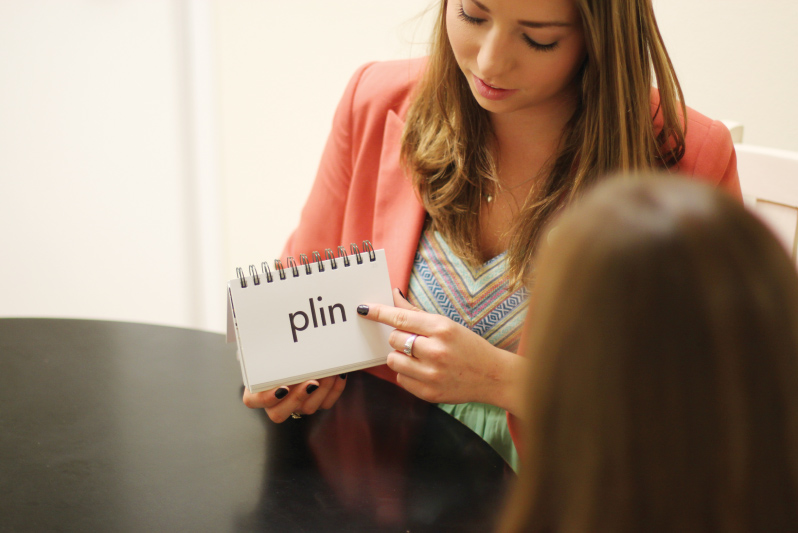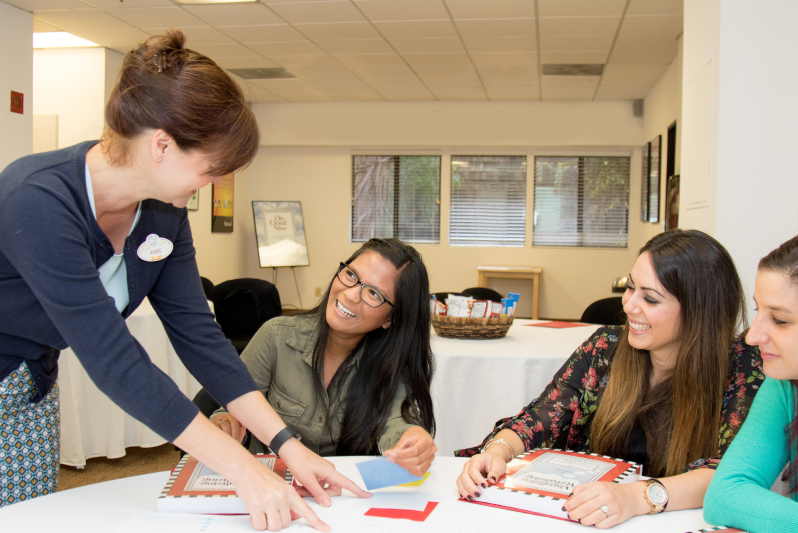Effective Reading Strategies for Students with Dyslexia

Supporting students with dyslexia demands customized approaches that cater to their unique challenges. At Lindamood-Bell, we recognize the difficulties dyslexic learners encounter and are dedicated to empowering both students and educators with evidence-based solutions. This article explores effective reading strategies that enhance skills and boost confidence for individuals with dyslexia.
Understanding Dyslexia

Dyslexia is a neurobiological learning difference that affects how individuals process language, particularly in reading and spelling. It is characterized by difficulties in phonological awareness, which is the ability to recognize and manipulate sounds in words. This can make decoding unfamiliar words and comprehending text challenging. Importantly, dyslexia is not a reflection of intelligence or effort; rather, it signifies a different way of processing information.
Recognizing the signs and symptoms of dyslexia is crucial for providing appropriate interventions and support. Common signs include
- Difficulty recognizing and manipulating sounds in words
- Struggling to decode words
- Slow and inaccurate reading
- Challenges with spelling
Understanding these signs allows educators and parents to implement effective strategies that support reading development.
The Impact of Dyslexia on Reading Skills

Dyslexia directly affects reading skills due to difficulties in phonological awareness. Individuals may have trouble breaking words down into their individual sounds or blending sounds together to form words. This can hinder individuals’ ability to decode words and understand text.
At Lindamood-Bell, we focus on developing the underlying skills necessary for reading, such as phonemic awareness, symbol imagery, and comprehension. By addressing these foundational skills, we help individuals with dyslexia become confident and successful readers.
Is Dyslexia Permanent?

Research from the Institute for Learning and Brain Sciences at the University of Washington indicates that while dyslexia is often considered a lifelong condition, targeted, intensive instruction can lead to substantial improvements in reading skills. According to Dr. Jason Yeatman, one of the study’s researchers, intensive interventions can drive growth in reading abilities and change the brain’s reading circuitry.
Read more here.

Improved symbol imagery, a crucial aspect of reading, can transform how students read and spell, regardless of their age or struggle with literacy. Numerous peer-reviewed studies have highlighted the effectiveness of Lindamood-Bell instruction in helping dyslexic students overcome challenges and achieve significant gains in reading proficiency– Summary of Behavioral & Neurological Research—Dyslexia.
Effective Reading Intervention Strategies for Students with Dyslexia

Here are some proven methods:
1. Teach Reading Using an Evidence-Based Approach
Individualized instruction tailored to each student’s unique needs is vital. Lindamood-Bell programs, grounded in evidence-based research, have been proven effective in helping individuals with dyslexia develop essential reading skills. These programs focus on improving key areas such as phonemic awareness, decoding, fluency, and comprehension, allowing students to make significant, lasting progress. By targeting specific learning challenges, Lindamood-Bell ensures that each student receives the support necessary for reading success. For those seeking more information and practical tips, we offer a free guide on 5 Essential Strategies for an Effective Literacy Intervention. This guide provides valuable insights and recommendations that can be implemented by both teachers and educational administrators. Download the Toolkit for Educators here.
2. Provide Differentiated Instruction
Teachers can tailor instruction to meet the individual needs of students, including those with dyslexia. By closely monitoring student progress, educators can adjust the pace, intensity, and content of lessons to ensure comprehension and skill development. Teachers may also provide additional practice where needed and offer personalized feedback. This targeted approach ensures that each student receives the right level of support to succeed academically.
3. Ensure Interventions are High-Dosage
Along with differentiated instruction, high-dosage intensive interventions have shown to be a critical component in remediating reading difficulties and closing literacy gaps. By focusing on specific skills while increasing instruction time, students can accelerate their learning process to close achievement gaps more quickly.
4. Implement Sustained, Job-Embedded Professional Development
Early identification and intervention of dyslexia are key factors in empowering individuals with dyslexia to become confident and skilled readers. By implementing effective strategies and providing the necessary support, educators can help individuals with dyslexia unlock their full potential.
Lindamood-Bell Professional Development workshops equip educators with essential skills to meet the unique needs of students with dyslexia. These workshops provide comprehensive training and resources, enhancing instructional practices and improving student outcomes. After the workshop, teachers can continue professional learning throughout the year with Lindamood-Bell’s online professional learning community, The Imagery-Language Connection.
5. Develop a Shared Leadership Vision
Establishing effective literacy plans highlights the critical role of leadership in schools. This involves defining specific roles and processes, evaluating performance, offering solutions, and establishing clear student expectations. A cohesive leadership vision ensures all stakeholders are aligned and working towards common literacy goals.
Schools partner with Lindamood-Bell for our expertise in research-validated programs that work within a Multi-Tiered System of Support (MTSS) framework and are aligned with state standards, including Common Core. We are uniquely prepared to help schools meet the needs of students with dyslexia.
A Sensory-Cognitive Approach to Helping Students with Dyslexia

A sensory-cognitive approach is vital for addressing the unique needs of students with dyslexia. This method targets the underlying sensory processes that support reading development, focusing on skills such as symbol imagery, which is essential for recognizing and processing letters and words.
For example, the Seeing Stars® program emphasizes developing symbol imagery—the ability to visualize letters and sequences of letters in words. Dyslexic learners often struggle with reading fluency and spelling due to weak symbol imagery, which affects their ability to recognize and recall words quickly. By enhancing this skill, students can improve their reading speed, accuracy, and ability to self-correct errors.
Unlike traditional approaches that emphasize repetition, a sensory-cognitive method helps students build the mental imagery necessary for effective language perception and decoding. This process addresses the root causes of dyslexia-related reading challenges, enabling students to significantly progress in their literacy skills.
Webinar: Remediating the Dyslexic Brain
For educators and parents seeking deeper insights into dyslexia and effective interventions, we invite you to view our webinar titled Remediating the Dyslexic Brain: Neuroscience, Research, and Solutions for Recovery. Lindamood-Bell’s Director of Research and Development, Paul Worthington, discusses common misconceptions about dyslexia, proven interventions, and the latest research in the field.
Case Study: Making a Difference for Students with Dyslexia in Fort Smith Public Schools

Fort Smith Public Schools in Arkansas serves a significant percentage of students at risk of reading failure. During the 2020-21 school year, the district implemented Lindamood-Bell instruction to address the specific needs of this student population. A total of 518 students received an average of 57.8 hours of primarily Seeing Stars instruction to develop symbol imagery for reading.
Fort Smith Public Schools’ teachers received professional development in Lindamood-Bell programs and delivered instruction. Student gains were measured using a battery of reading assessments.
Results:
- On average, Seeing Stars students achieved significant improvements in reading.
- Pre- to post-test results showed statistically significant gains on all measures.
- Students made large standard score changes in the foundational skills needed for improved reading, moving from below normal into the normal range (25th-75th percentile) in symbol imagery, phonemic awareness, word attack, and reading comprehension.
This case study demonstrates that Lindamood-Bell instruction can improve reading skills, essential for achieving success in school curricula.
Hear from Fort Smith Public School educators on their experience with Lindamood-Bell Professional Development:
View more results and case studies of our work with schools.
Support for Students with Dyslexia

At Lindamood-Bell, we understand the unique challenges students with dyslexia face in reading and comprehension. Our evidence-based programs are specifically designed to support them in their literacy journey. By utilizing our research-based strategies and techniques, students can develop the necessary skills to become confident and independent readers.
In addition to our programs, we offer professional development for educators, equipping them with the essential skills needed to meet the unique needs of students with dyslexia. Our workshops provide comprehensive training and resources to enhance instructional practices and improve student outcomes.
If you’re ready to learn more or register for a workshop, we encourage you to contact Lindamood-Bell. Click here to schedule a brief consultation with a program expert and to discuss your intervention needs. We look forward to working with you to help students with dyslexia reach their learning potential!





